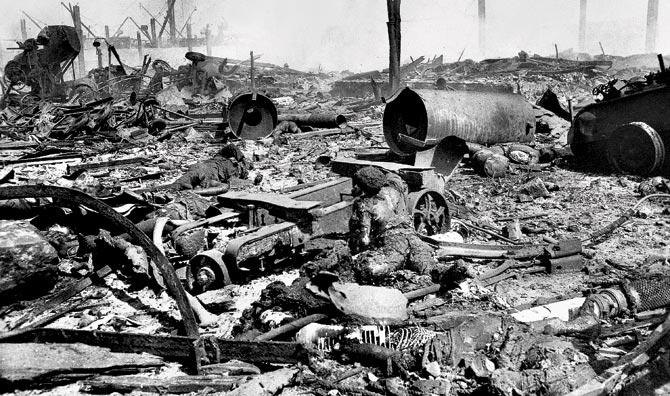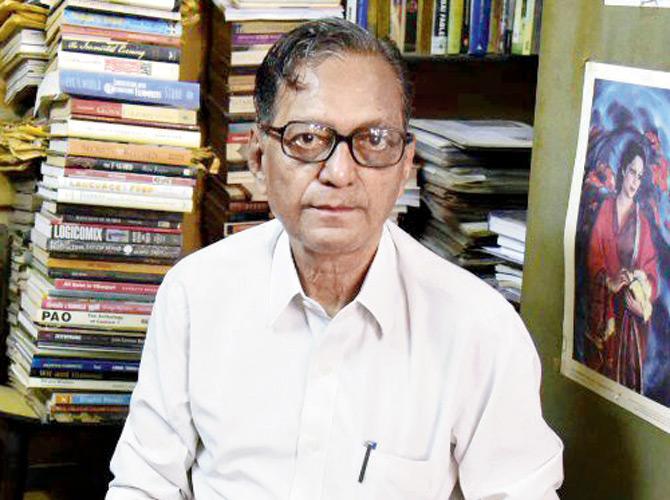Mumbai historian recounts the horrors of the 1944 Bombay Dock Explosion, which killed hundreds and rendered thousands homeless in one of the city's worst fire disasters

Marked as Fire Services Day today, the Bombay docks explosion occurred at Victoria Docks when freight steamer SS Fort Stikine, caught fire

Rafique Baghdadi recalls how the fire destroyed the docks and railways, as well as thousands of homes. Pic courtesy Railway archives
ADVERTISEMENT
Every April 14, city historian Rafique Baghdadi, now in his 70s, takes a silent walk inside the Byculla zoo garden, and recounts his parents' tales of how this public garden was a life-saving oasis when the city was burning during the 1944 Bombay Dock Explosion.
Marked as Fire Services Day today, the Bombay docks explosion occurred at Victoria Docks when freight steamer SS Fort Stikine, caught fire. The ship was destroyed in two giant blasts, scattering debris, sinking surrounding vessels, and setting fire to the area, killing around 1,300 people. In the midst of all the chaos, Byculla zoo or Veermata Jijabai Bhosale Udyaan and Zoo, as it is known today, was the one place where families found refuge.

Rafique Baghdadi
"It was a horrible, horrible time. My parents kept telling me about those chaotic days. The Second World War was on, and everyone thought the Japanese had attacked the city. Since it was wartime, newspapers were restricted, there were limited updates. People were unaware for nearly a week as to what was happening," recollects Baghdadi. British-Indian wartime censorship permitted news reporters to send updates only in the second week of May 1944.
"The entire business district near the docks was nearly wiped out. Due to the blasts, gold bars from the ship rained on nearby localities. This fuelled more rumours, and many abandoned the city forever," added the historian.
Some 80,000 people were made homeless, and 66 firemen lost their lives in the aftermath. It took three days to bring the fire under control and, later, 8,000 men toiled for seven months to remove around 5 lakh tonnes of debris and bring the docks back into action.
In Victoria we trust
This was in the 1940s, when the city was still called Bombay, and almost all popular spots were named after Queen Victoria. So, as the inferno raged at Victoria Dock, harried citizens either moved to Victoria Garden (today's Byculla zoo) for refuge, or to Victoria Terminus (now Chhatrapati Shivaji Maharaj Terminus or CSMT), leaving the city in hordes.
"Everyone wanted to leave the city by the first available train, and there was pandemonium like never before at VT. People came from all over with their belongings to leave the city. My father was working at Bombay Talkies at Malad, which was a bit far from the action, but my mom was at her mother's place at Mazgaon, where the heat was on. She and her family had rushed to Victoria Gardens for shelter. Almost everyone in the vicinity had gone there; many families took their life's belongings with them," said Baghdadi.
"The docks were completely damaged, the railway lines were burnt, and public property stood in ruins. April has been a painful month for the city, and today's generation should know this," he added.
The Mumbai Fire Brigade's headquarters at Byculla built a memorial to the numerous firefighters who lost their lives in the disaster. National Fire Safety Week is observed across India from 14 to 21 April, in memory of the 66 firemen who died.
Catch up on all the latest Mumbai news, crime news, current affairs, and also a complete guide on Mumbai from food to things to do and events across the city here. Also download the new mid-day Android and iOS apps to get latest updates
 Subscribe today by clicking the link and stay updated with the latest news!" Click here!
Subscribe today by clicking the link and stay updated with the latest news!" Click here!







